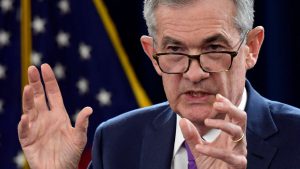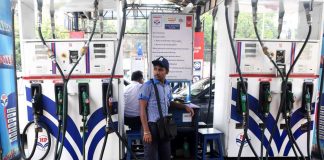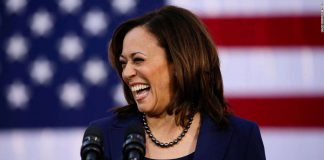SEPTEMBER 6, 2021

Jerome H. Powell, the Federal Reserve chair, has suggested that he would like to see continued job gains before slowing the central bank’s support for the economy. – Susan Walsh/AP
Federal Reserve officials who have been looking for continued improvement in the labor market received a discouraging piece of news on Friday, when the Labor Department reported that employers added 235,000 jobs in August — far fewer than projected and a sign that the Delta variant may be weighing on hiring.
The Fed has been buying $120 billion in government-backed bonds each month to keep longer-term interest rates low and many types of borrowing cheap, bolstering lending and spending to help the economy heal. Officials are debating when and how to pare back those bond purchases, and investors are looking for an announcement about the planned start of the so-called taper at one of the Fed’s coming meetings.
But central bankers have tied their policy path closely to the labor market, suggesting that the economy has not yet quite achieved the “substantial further progress” they had hoped to see on the jobs front. Officials including Jerome H. Powell, the Fed chair, have signaled that although the economy has made adequate strides toward the central bank’s inflation goal to justify a slowdown in bond buying, they would like to see continued job gains before they feel confident in removing support.
“They believe we’ve met substantial further progress for inflation,” Matthew Luzzetti, chief U.S. economist at Deutsche Bank, said before the report. “We’re just waiting on meeting that threshold for the labor market.”
Mr. Powell said during a speech last week that as of the Fed’s July meeting, he and most of his colleagues thought the Fed could start reducing the pace of asset purchases this year if the economy performed as they expected.
“The intervening month has brought more progress in the form of a strong employment report for July, but also the further spread of the Delta variant,” Mr. Powell added, saying that the Fed would be “carefully assessing incoming data and the evolving risks.”
The jobs report showed a sharp pullback in hiring in leisure and hospitality, which tends to be especially sensitive to virus outbreaks. At the same time, wages continued to rise in general and for leisure and hospitality workers in particular — suggesting that employers are paying up to lure employees, and hinting that labor supply issues may be part of the reason they hired more slowly in August.
The Fed has other tools to support the economy, even after it begins to slow its bond purchases. The central bank’s main policy interest rate, which guides short-term borrowing costs and affects consumer rates from mortgages to car loans, is at rock bottom and is likely to stay there for months or even years.
But slowing bond purchases will be the first step toward a more normal policy setting, and a sign that the Fed thinks the economy has come through the turbulent pandemic lockdown period and is making strong progress toward a full recovery.
The central bank is tiptoing gingerly when it comes to removing policy support compared to after past recessions: The unemployment rate dropped to 5.2 percent in the August report, and is likely to be substantially lower by the time the Fed increases rates. After the 2008 recession, the Fed had finished tapering and raised rates in late 2015, when joblessness was around 5 percent.
The slower reaction this time comes in part because economic conditions have been evolving so quickly. But more than that, many policymakers have come to see the Fed’s decision to start raising interest rates in 2015 — before the labor market was operating at full speed or inflation had stabilized — as a mistake. The Fed formally reworked its policy approach last year, laying out a more patient game plan and qualifying its employment target as a “broad-based and inclusive goal.”










































































































